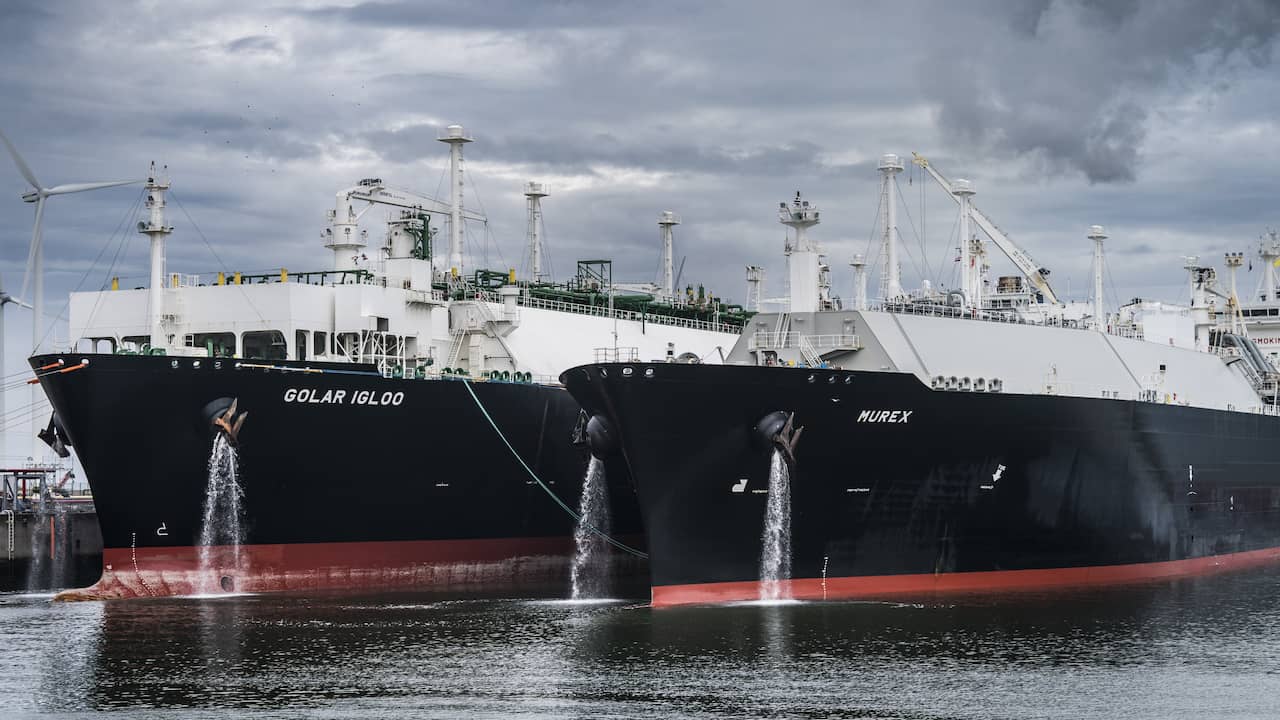A new port for the import of liquefied natural gas (LNG) will be built in Terneuzen. Gasunie announced on Monday that it wanted to build it. Earlier this year one had already been installed in Eemshaven and the LNG port of Rotterdam was also expanded. Energy experts believe further expansions remain helpful in bringing down the price of gas slightly (in the long run).
Gas prices are so high because the supply has dropped dramatically, while the demand for gas has remained the same. At least that’s the simple version.
But in reality, the price of gas is currently being pushed up by something else: there are too few LNG ports. That’s what gas expert Jilles van den Beukel of the Center for Strategic Studies in The Hague (HCSS) says. “The LNG supply is actually not the problem.”
Due to this limited import capacity, the price paid for gas onshore is 30-40% higher than the traded price for gas in the North Sea. Sometimes there are tankers floating there that can’t get rid of the gas in the ports.
“Dutch LNG” flows to Germany
Compared to other European countries, the Netherlands can import a lot of LNG. In addition to the Eemshaven terminal, there is also one in Rotterdam, which was completed in 2011. The import capacity has already been expanded this year from 12 to 16 billion cubic meters, and will also increase to 20 billion. Eemshaven will add another 8 bcm.
But our well-developed pipeline network also has a ‘disadvantage’: it was built to export large quantities of gas, from the days when we produced a lot of it ourselves.
As Europe has a shared gas market, higher gas demand in Germany means that a lot of “Dutch LNG” crosses the eastern border (and here too the price rises). In fact, almost all of the LNG imported into the Netherlands currently goes to Germany, says gas expert Rene Peters of research agency TNO.
The Terneuzen terminal can be ready next winter
So the question arises whether it would be smart if the Netherlands built another LNG port. This could be done in several places, but Zeeland now appears to be the most prominent candidate: Gasunie indicated on Monday that it will consult with the economy and climate ministry to also build a terminal in Terneuzen. It should be operational before next winter and decommissioned again after winter 2025/2026.
So it won’t be of any use for the current winter, but Van den Beukel thinks it still makes sense to build another one. If it is a small terminal it can import about 5 billion cubic meters of gas a year. And with every 5 bcm of import capacity expansion, the price of gas will fall by around 5%, says Van den Beukel.
The Netherlands reaps the benefits of the new German terminal
Van den Beukel predicts that if the Netherlands also reaches the point where the LNG import capacity exceeds the transport capacity to Germany (about 35 bcm), the two countries will have different gas prices for the first time . Furthermore, gas would be cheaper in the Netherlands than in our eastern neighbours. The Terneuzen terminal should therefore have a capacity of over 7 billion cubic meters.
But in the meantime, Germany itself is also building up further import capacity: The first LNG port in Wilhelmshaven will open on 17 December. Because of this connected market, this will also lower the price in the Netherlands.
“We actually have a joint competition between the Netherlands and Germany to build as much LNG capacity as possible now, in order to enjoy slightly more relaxed pricing,” concludes Peters.


